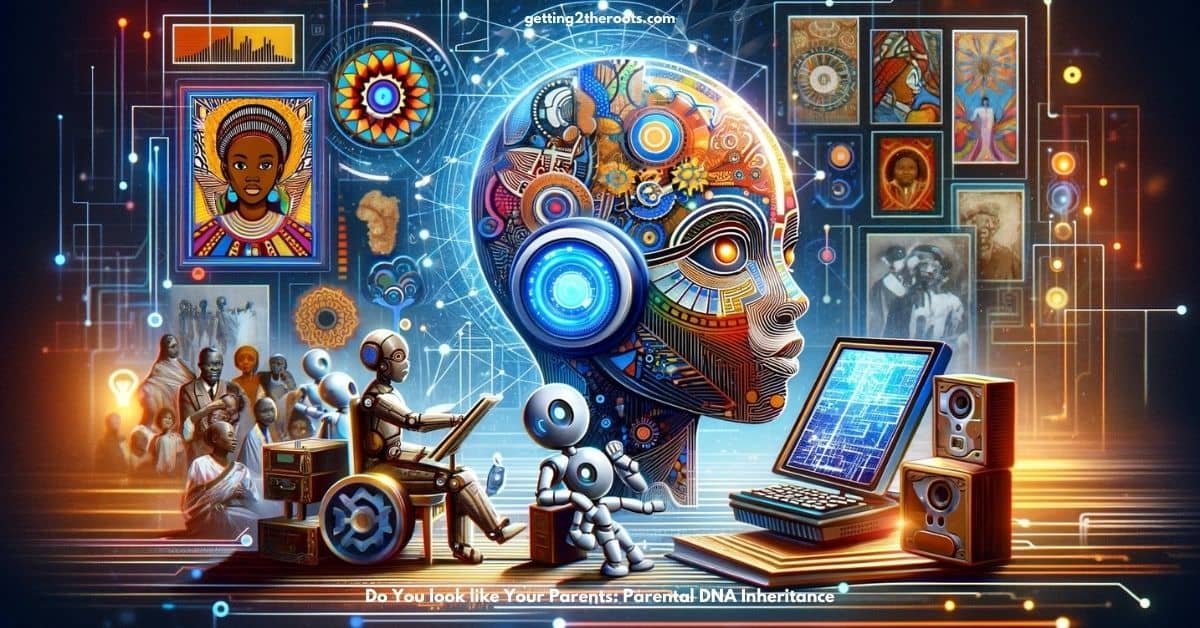Initiating the human journey, Parental DNA Inheritance weaves together the intricacies of life’s blueprint as it commences with the fusion of DNA sequences passed down from previous generations.
Through a miraculous array of biological processes, DNA from the mother and father intertwines to craft a unique genetic constitution, paving the way for the conception of an individual.
This panoramic view of genetic inheritance extends beyond parental lineage, creating an intricate matrix of blood ties that interlink siblings and illuminate ties with grandparents, uncles, aunts, and cousins.
As part of this study, we look into how DNA works and how much of each parent’s genes we inherit.
And how genes affect relationships between siblings, and how genes affect our relationships with extended family.
Unlock the secrets of your ancestry and health with “Deciphering the Codes: How to Read DNA Test Results”‘ Don’t miss out on the keys to your genetic blueprint.
Visit Getting to the Roots now to explore your DNA story and gain invaluable insights into your heritage. Join the journey of discovery today
Decoding Parental DNA Inheritance: The Blueprint of Life
Understanding the Proportion
Since the dawn of molecular genetics, the enigma of Deoxyribonucleic Acid, more commonly known as DNA, has intrigued the scientific community.
This intricate system of genetic encoding, housed in every living cell, serves as a distinctive blueprint for life.
One might inquire, “How is DNA determined, and exactly what bestows our unique genetic inheritance?”
This article aims to shed light on these compelling questions by delving into the mechanisms of DNA determination and genetic inheritance.
Each individual’s DNA is an amalgamation of genetic material passed down through generations.
DNA determination is initiated at conception when the sperm from the father merges with the mother’s ovum.
This fusion sets off a very important biological event: the creation of a zygote. This has its own DNA structure, made up of 23 chromosomes from each parent, for a total of 46 chromosomes that are unique to that new life.
A pivotal role player in this process is the principle of independent assortment, first proposed by Gregor Mendel, the father of modern genetics.
It postulates that for every gene, a child could potentially inherit the mother’s or father’s version, each conferring a 50% likelihood.
This accounts for the wide-ranging genetic-related variations observed among siblings.
But this principle alone doesn’t entirely encapsulate the complexity of inheritance patterns.
Enter the notion of ‘dominance’, a concept that elucidates the expressivity and penetrance of an inherited trait.
Briefly put, if one version (allele) of a gene is ‘dominant’, its trait will show, even when an alternative version (recessive allele) is present.
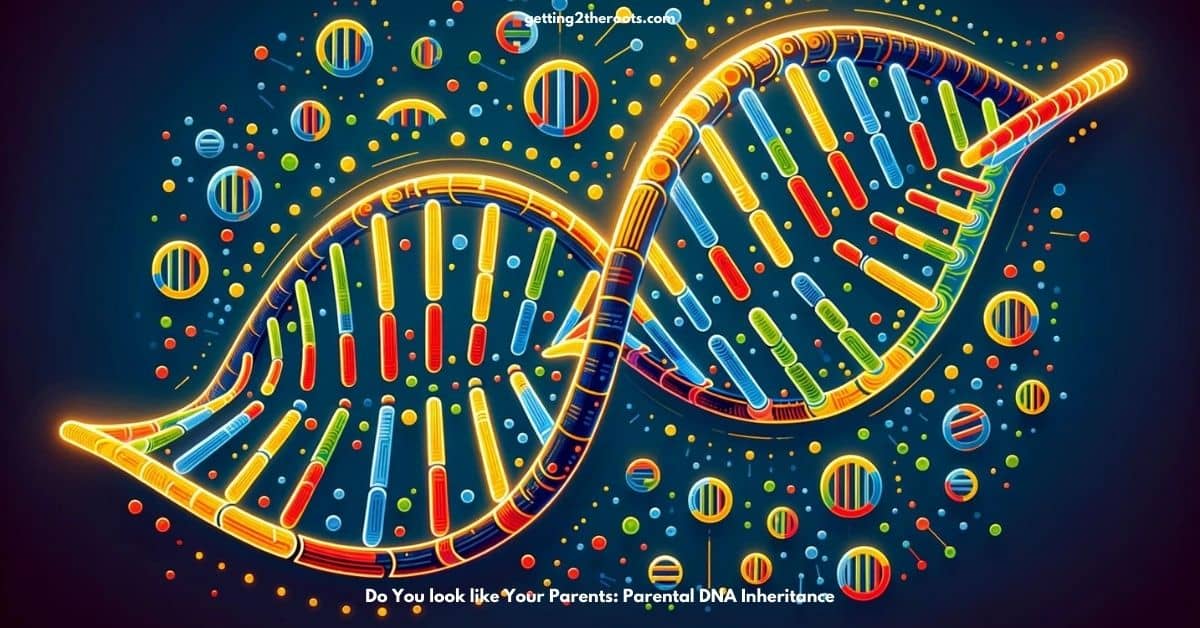
Consequently, a gene’s expression isn’t merely a coin flip, it’s artfully orchestrated by the interplay between dominant and recessive genes.
It is noteworthy to mention epigenetic factors such as DNA methylation and histone modification as crucial compounding factors in the inheritance pattern.
These could switch genes on or off, influencing the phenotype without altering the genetic code.
Although DNA determination and genetic inheritance stem from basic scientific principles, fully grasping them is a complex task.
The journey to understand DNA determination and genetic inheritance is a never-ending quest for scientists.
It’s a complex balance of simple concepts and intricate details, with each discovery as captivating as life’s own diversity.
A myriad of questions persist, encouraging a rigorous voyage toward deciphering life’s most profound blueprint.
The advancements made in genomics and molecular biology have been monumental.
As a result, stakeholders are optimistic that we are on the cusp of finding answers that will lead to groundbreaking breakthroughs in the field of genetics.
This promising panorama of scientific progress paints an exciting future for the genetic realm.
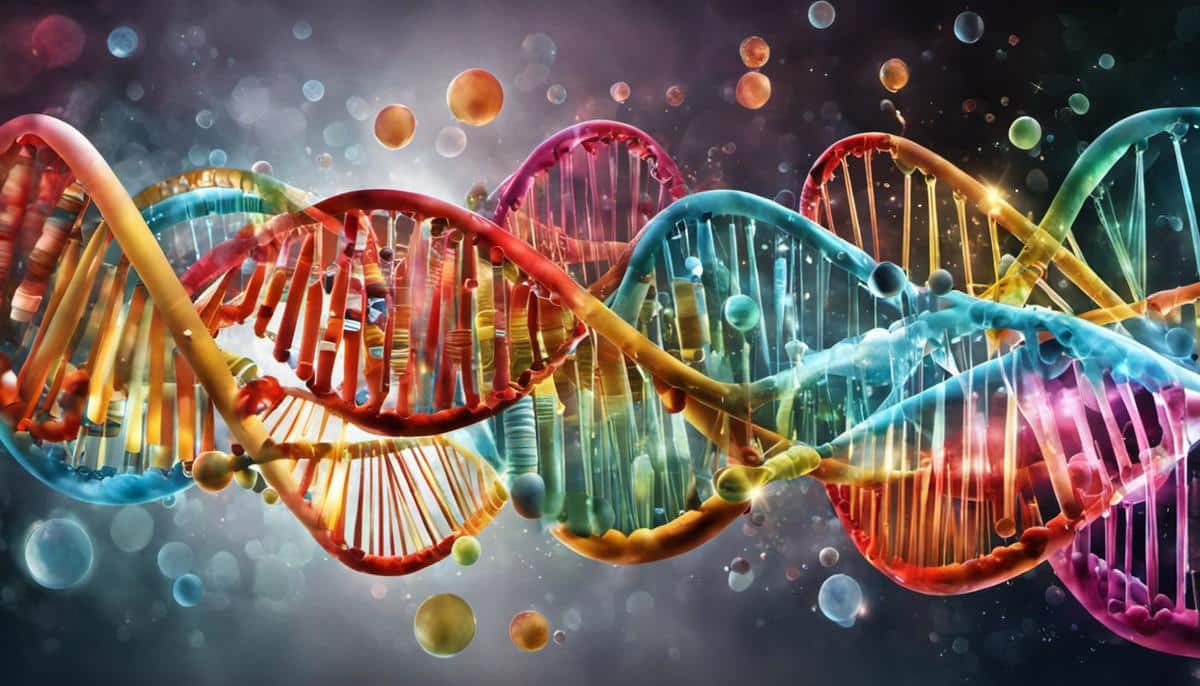
Understanding the Proportion
A Deeper Examination and Transmission
Building on foundational knowledge of DNA inheritance at conception and zygote formation, a compelling matter of considerable intrigue emerges: the precise proportion of our DNA that hails from each parent.
Casting light on this multifaceted domain is a matter of dissecting the layers of genetic and molecular processes central to life’s intricate orchestration.
To clarify, it’s crucial to acknowledge that a human is bestowed with 23 pairs of chromosomes—22 pairs of autosomes and one pair of sex chromosomes—amounting to a total of 46 chromosomes.
Every pair contains a chromosome from the mother and one from the father, suggesting that we receive half of our DNA from each parent.
Nevertheless, this ubiquitously accepted figure hides layers of complexity that warrant diligent exploration.
The Role of Mitochondrial DNA in Parental DNA Inheritance
- Delving deeper into this framework, the mitochondria, often labeled as the cell’s ‘powerhouse’, play a substantial role in shaping this narrative.
- Unlike nuclear DNA, mitochondrial DNA is inherited solely from the mother, which implies that the portion of our DNA coming from each parent is not entirely symmetric.
- As per several estimates, the mitochondrial genome amounts to approximately 0.0006% of the total human DNA, a seemingly small yet significant adjustment to the overall DNA inheritance percentages.
Adding a further layer of complexity, recent research has uncovered a phenomenon known as ‘genomic imprinting’.
This pattern involves certain genes behaving differently depending on whether they derive from the mother or father.
Namely, a subset of genes—commonly estimated to be less than 1%—are imprinted, meaning that only the copy from either the father or the mother, not both, is ‘activated’ or expressed.
The presence of these imprinted genes underscores how the simple 50/50 concept of genomic inheritance might not capture the full depth and nuance of gene expression and regulation.
Furthermore, the degree of DNA we share with our parents varies across our genome due to the biological process of recombination, which happens during the formation of eggs and sperm.
Recombination incites a ‘genetic shuffle’, where DNA fragments from each of the parent’s chromosomes are swapped before being passed on to offspring.
This process thrives on enhancing genetic diversity, yet it introduces additional complications in attempting to quantify how much DNA we inherit from each parent.
Finally, one must consider that it is at our conception that we inherit our DNA map.
And it resolutely stays the same throughout our lifetime; the influences of environmental externalities can sway certain genetic expressions.
This realization accentuates the progressive movement towards more informative echelons within genetics, namely, the burgeoning exploration of epigenetics.
Witnessing the nimbly dancing components within our genomic ballet underscores the revered complexity intrinsic to DNA inheritance.
Parental DNA inheritance is often described simply as a 50/50 split from each parent. However, a deeper look reveals a complex and unique genetic interplay within us.
The more we delve into genomics and molecular biology, the more we uncover about these captivating aspects of life.
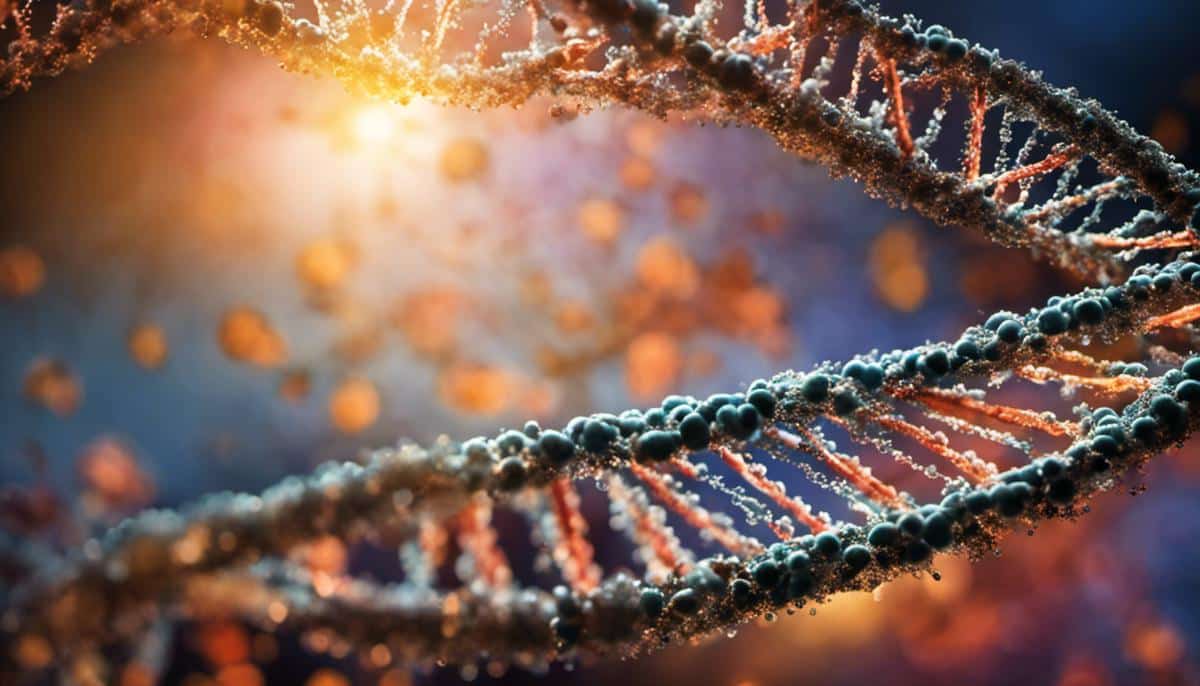
The Science of Parental DNA Inheritance and Sibling Diversity
The Complex Tapestry of Parental DNA Inheritance and Family Traits
Understanding the tapestry of heredity woven within the DNA strands is fundamentally riddled with intricacies.
In addition to the genes that are present at conception and during the formation of the zygote, there are many other factors that affect the differences between siblings.
The pivotal role of chromosomes—23 pairs in total—in housing genes—units of inheritance composed of DNA—must be emphasized.
Every individual inherits one set of chromosomes from each parent. The variations we see among siblings arise predominantly from the dynamic interplay between these 46 chromosomes.
The Labor of Mendel, elucidating the fundamental principles of inheritance, helps us appreciate this seeming randomness evident in familiar facial resemblances and even in underlying health predispositions.
Another enlightening facet leading to diversity among siblings is the principle of mitochondrial DNA inheritance.
This DNA is exclusively passed on from a mother to her offspring, elucidating maternal line genetics and adding another nuanced layer to genetic diversity among siblings.
Genomic imprinting, a relatively recent discovery, also impinges heavily on sibling similarities and differences.
Here, specific genes can be switched on or off, depending on whether they are inherited from the mother or the father.
So, these discretely “parentally stamped” genes can create traits that are unique to a family, giving a more complete genetic picture of a family.
The recombination process forms an intricate part of the tapestry of the geneticities of siblings.
Through crossing over during meiosis, DNA from the mother and father is not merely inherited as a block.
But rather as a shuffled deck, increasing genetic diversity and thereby adding an individualistic genetic fingerprint to each offspring.
On a more subtle but profoundly influential level, environmental factors also contribute greatly to genetic expression.
As dynamic beings interact with our environments, gene expression can be altered based on environmental conditions, leading to differences in how our genetic makeup is exhibited.
Lastly, the rising field of epigenetics provides another aspect to this narrative.
Epigenetic changes, though not altering the DNA sequence, can influence gene activity and even be inherited.
It is the amalgamation and sheer complexity of these factors that result in the extraordinary uniqueness and subtle similarities among siblings—a wondrous testament to nature’s diversity despite shared parental source codes.
As we delve deeper into the realms of genomics and molecular biology, greater strides can be expected, pushing the horizons of our understanding of the genetic symphony that threads siblinghood together.
The quintessential beauty resides in the revelation that even though we inherit a set blueprint, the final assembly is a robustly individualized masterpiece, formed through broad genetic and environmental brush strokes.

Extended Family Ties: Exploring the Impact of Parental DNA Inheritance
Moving beyond these significant initial concepts, the following sections aim to further illuminate the molecular mechanisms that guide hereditary traits within families.
Crossing-over, a complex process that occurs during the individual developmental phase known as meiosis, is perhaps one of the most meaningful phenomena in the establishment of genetic variation.
During crossing-over, homologous chromosomes—a pair each individual receives from their parents—intertwine and exchange genetic information.
This marvelous play of biological checkers results in chromosomes whose genetic composition is a novel mosaic of the grandparents’ genetic material.
Hence, each cousin, aunt, uncle, grandparent, or our own sibling can virtually become an archive of a shared genetic history, redefined and reshuffled over generations.
Moreover, the concepts of incomplete dominance and co-dominance introduce further complexity in the genetic manifestation of traits.
In the traditional view of dominant and recessive traits, dominant traits are stronger than recessive traits.

However, incomplete dominance lets parent traits mix, while co-dominance causes both traits to show up at the same time.
These non-Mendelian patterns of inheritance hold the potential to create attributes that are mixtures of our familial forebears’.
Moreover, the concept of genetic linkage is crucial in understanding how certain traits are passed down through families.
This phenomenon occurs because genes that are situated close to one another on a chromosome tend to be inherited as a group.
It significantly influences the patterns of inheritance for specific characteristics within a family lineage.
These gene clusters, as a result, can maintain a set of characteristics expressing a distinctive ‘family resemblance’.

Beyond the realm of nuclear DNA, the contribution of mitochondrial DNA (mtDNA) is not to be overlooked.
mtDNA is mostly inherited from the mother, stays the same, and is passed down from generation to generation without recombination. This creates a strong genetic link through the mother’s lineage.
A relatively new concept that has emerged as a critical player in the determination of traits is epistasis.
An epistatic gene can suppress or mask the expression of others, adding yet another layer of intricacy to the dynamic genetic landscape within a family.
Understanding genetic similarity and the ubiquity of constant variation in a family, thus, is akin to comprehending a vast and intricate puzzle.
The grand picture only makes sense when the individual pieces are meticulously snapped together.
The gems of science are indeed hidden in the genomic symphony played out over generations, articulating the story of family resemblance.
Therefore, the fact that our DNA keeps bringing up memories of the past in the way we look and act now says a lot about both how fixed it is and how it is always dancing with change and chance.
The astute observations of our shared familial features, thus, serve as a testament to the fascinating world of genetics and heredity.
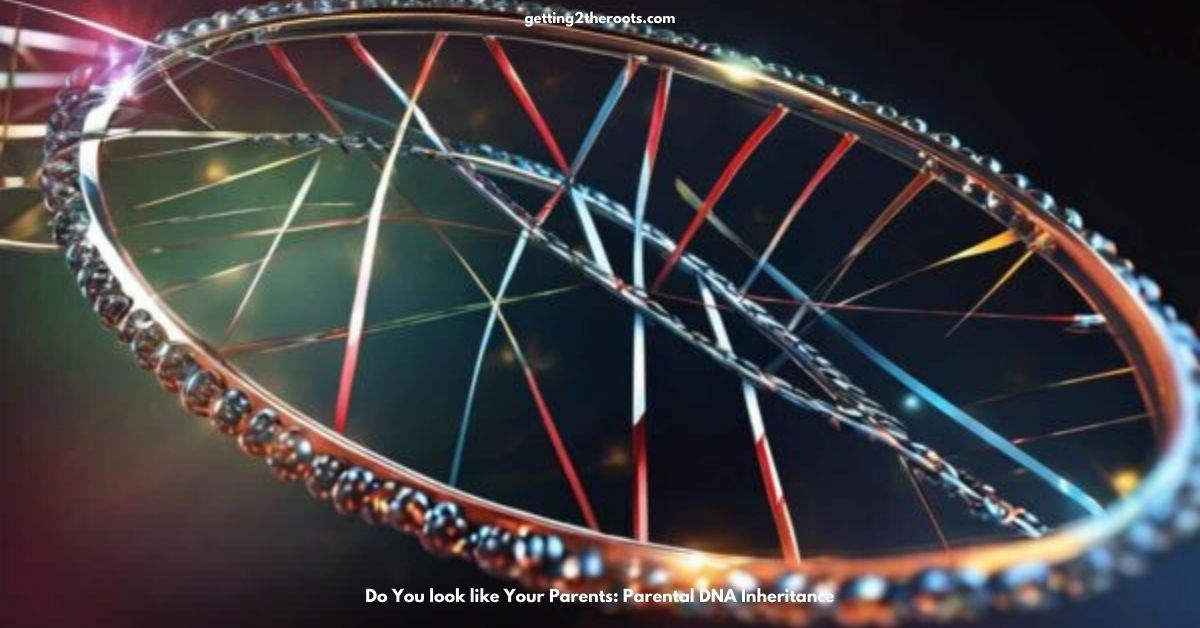
As scholarly detectives with cutting-edge genomic tools at our disposal, we delve deeper into the enigmatic world of our genetic makeup.
With each advancement in genomics technology, we unveil more of the molecular saga that narrates our evolution, kinship, and legacy.
The scientific community, alongside humanity at large, finds itself continuously inspired and amazed by these revelations.
These explorations not only enrich our understanding of biology but also reinforce the profound connections that bind us across generations
It’s a journey that celebrates the continuity of life and the intricate stories written in the very DNA we inherit.
It’s a journey that celebrates the continuity of life and the intricate stories written in the very DNA we inherit.
Embarking on the intriguing voyage of genetic connections, this exploration has woven a narrative detailing our DNA’s profound influence that shapes our identity, drives our individuality, and underscores our lineage.
By discerning the fractionated yet unified contributions of our parents, experiencing the wondrous resemblances and disparities amongst siblings, and cherishing the hallmark traits echoing through generations, we make peace with the mysterious puzzle of heredity.
The concept of inheritance serves as a reminder that, while borrowing from the past, our DNA is not just replication but a fascinating product of recombination and mutation—the essence of the evolutionary play.
To comprehend genetics is to appreciate individual uniqueness nestled within shared familial bonds, an appreciation rebelling against comparisons yet celebrating connections.
Frequently Asked Questions (FAQ) Parental DNA Inheritance
- How does Parental DNA Inheritance affect our traits?
- The combination of genes you inherit from your parents affects your physical appearance and some behavioral traits. Single genes can directly affect some traits, while multiple genes interact in complex ways to produce other traits.
- Can you inherit more DNA from one parent than the other?
- While you receive roughly 50% of your DNA from each parent, the exact amount can vary slightly. Additionally, the expression of inherited traits can be influenced by which parent contributed certain genes and environmental factors.
- How do genetic mutations affect DNA inheritance?
- Mutations can alter a gene’s DNA sequence and potentially change the trait it controls. These mutations can be inherited from a parent or occur spontaneously, and they contribute to genetic diversity.
- What role does genetic linkage play in inheritance?
- Genetic linkage refers to the tendency of genes that are located close to each other on the same chromosome to be inherited together. This can affect the inheritance of certain traits, especially if they are linked to the same chromosome region.

